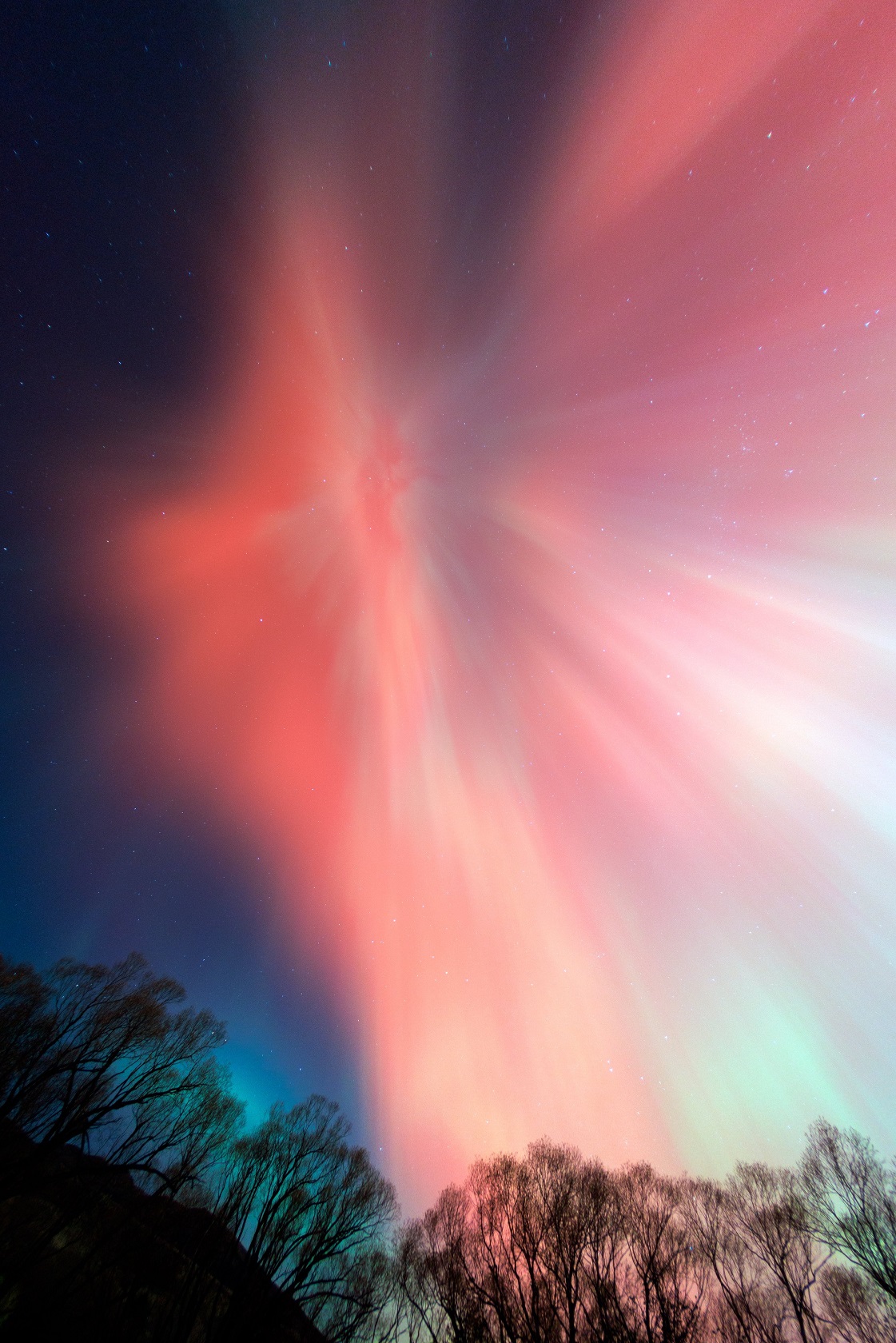
That night, people across Otago and New Zealand enjoyed a stunning display of the southern lights. From my vantage point beside Lake Aviemore, with seven cameras, I took more than 15,000 images from dusk on 11th of May to dawn on May 12th.
Since then, I have been slowly trawling through my new library of aurora images. Last week, I came across a sequence of photos taken just before 9pm that night, which shows one of the most majestic of auroral forms: the corona.

The genesis of every aurora is solar wind, which carries charged particles from the sun toward Earth.
When they encounter Earth’s magnetosphere, these particles are funnelled toward the polar regions.
Here, they collide with atmospheric gases, exciting their molecules and causing them to emit light.
An auroral corona can only be seen when an observer is positioned directly beneath the zenith of a powerful geomagnetic storm, where they can see the convergence of the magnetic field-lines.
From Otago these Aurora Crowns are incredibly rare; I have seen one just twice since moving here in 2013.
In this unique alignment, the usually horizontal bands of light converge and radiate outward from a central point. The resulting pattern, with light streaming out in a starburst, was an immense, otherworldly spectacle.
Standing beneath this vast, luminous canopy, the whole night sky seemed to pulse with ethereal energy. The corona's colours were a delicate blend of hues.
While most auroras are predominantly green, due to the interactions of oxygen atoms at lower altitudes, this display was punctuated by flashes of red — the result of high-altitude oxygen.
Even more rare were the shades of purple and blue, produced by nitrogen.Together they cast a dreamlike glow over the landscape around Lake Aviemore.
This truly was an aurora for the ages.











